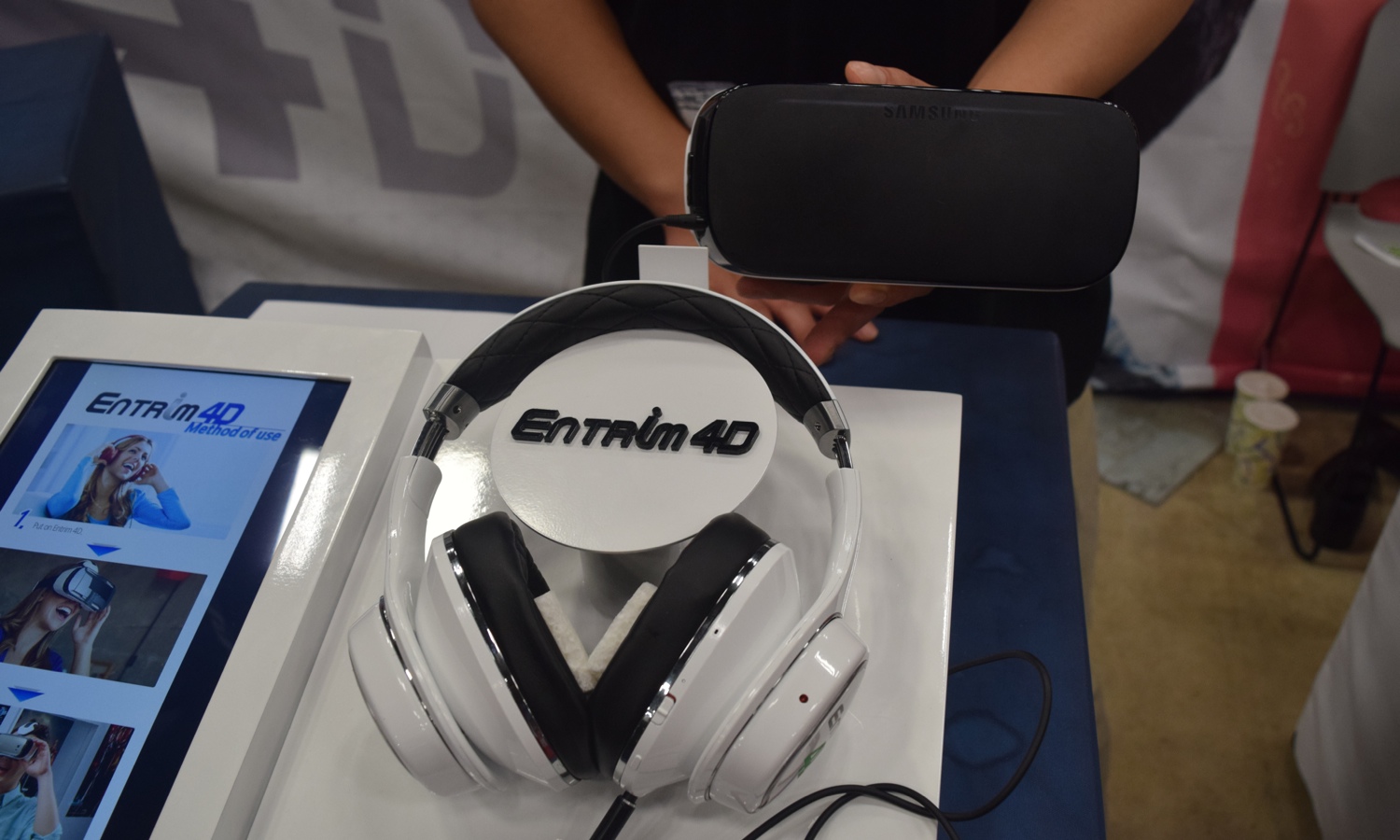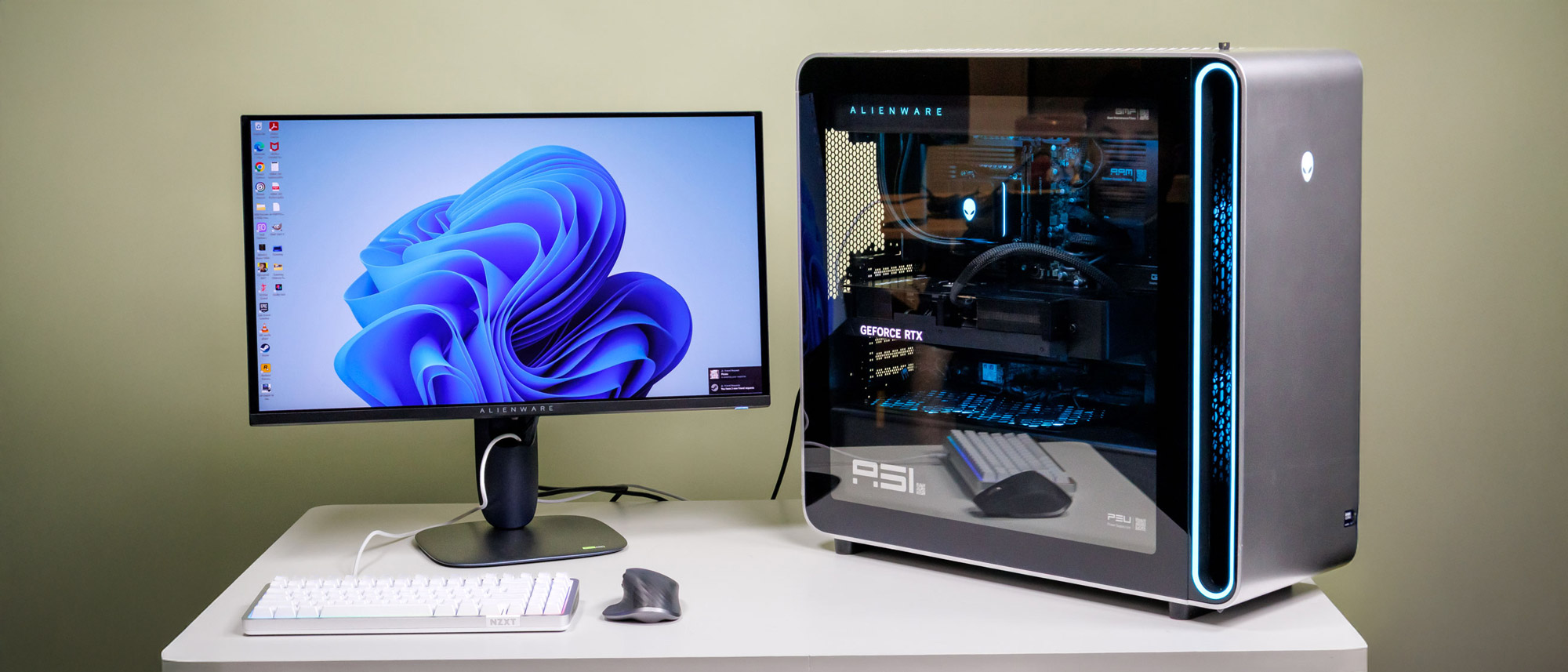Samsung VR Headphones Make You Feel Like You're Moving
Samsung wants to enhance the mobile VR experience with headphones that send electrical signals to tweak your sense of balance.
AUSTIN, Texas — Samsung could have rested on its laurels after the success of the Gear VR headset. Instead, the company is busy at work trying to enhance the virtual-reality experience with appropriate headphones.
Research teams from the company were on the SXSW 2016 Interactive show floor here, showing off an early VR-headphone prototype called the Entrium 4D. Described as a motion headset, the Entrium tricks the wearer into thinking he or she is moving, even when perfectly still.
The Entriums look like a pair of tricked-out Level headphones, thanks to their glossy white plastic frames. The Entriums, however, have green LED lighting on the earcup, framing a large 4D logo in the center. The flashy headphones also have white spongy material strategically placed on the earcups' interior. And that's where this story gets weird and wonderful.
MORE: Best Gear VR Games
After putting on the Gear VR over my eyes, I put the Entrium over my ears, following explicit instructions to make sure the sponges were positioned on the skin behind my earlobes. When my fingers came into contact with the material, I noticed it was very damp. I was more than a little freaked out when the sponges hit my skin.
Steve Jung, the head researcher of the project, explained the method behind the seeming madness. In a process called Galvanic Vestibular Stimulation (GVS), the headset sends a small electrical signal to nerves inside the ears that control balance, creating a sensation of movement.
Jung calls this "movement illusion." To date, the team has tested more than 30 types of effects, including walking and rotation.
But for this demonstration, we'd be focusing on leaning — namely, the motion that occurs when you take a sharp corner in a fast-moving car. The end goal of the project is to create a more immersive VR experience while eliminating motion sickness.
So now for the demo. When it began, I saw that I was in the driver's seat of a race car on a closed track. It started off normally enough. I was barreling down a straightaway at an exorbitant amount of speed. As I saw the first corner, the hairs on the back of my neck started to rise in anticipation. A message briefly flashed informing me that the effect was enabled as the car took the turn.

MORE: Best Gear VR Apps
I felt a tingling behind both ears and started to sway to the left, in the direction of the curve in the track I was seeing. At least, I thought I had begun leaning. In fact, I only swayed slightly, which caused a passing feeling of dizziness. The mild tingle from the current was more disturbing than the swaying sensation.
I took a few more turns with the demo, toggling the effect on and off. At the end of the minute, the car finished its lap and I was left feeling no worse for wear.
The Entrium 4D is an opening play in the growing field of body illusions. As more technology is developed for VR, including haptics, it's not a far stretch to imagine that in the future virtual reality will be indistinguishable from real life. Depending on who you ask, that may or may not be a good thing.
Sign up to get the BEST of Tom's Guide direct to your inbox.
Get instant access to breaking news, the hottest reviews, great deals and helpful tips.
Sherri L. Smith has been cranking out product reviews for Laptopmag.com since 2011. In that time, she's reviewed more than her share of laptops, tablets, smartphones and everything in between. The resident gamer and audio junkie, Sherri was previously a managing editor for Black Web 2.0 and contributed to BET.Com and Popgadget.

